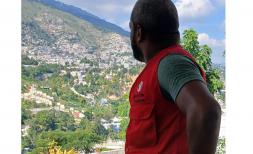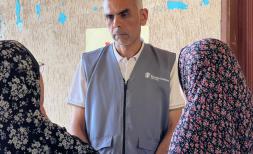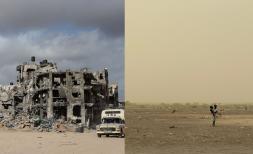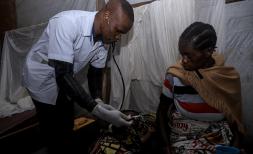Coronavirus could push over 40 million children globally into poverty
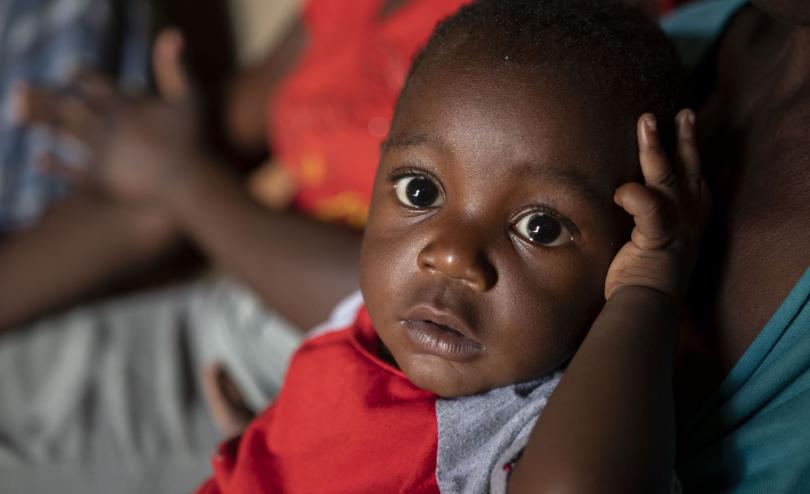
COVID-19 is putting a strain on societies and economies around the world, and the poor who are carrying the burden of the disease, both in high-income countries as well as in developing contexts. Various forecasts and projections in the last few weeks are showing the devastating effects the new coronavirus is likely to have on the world’s poorest countries, especially in Sub-Saharan Africa.
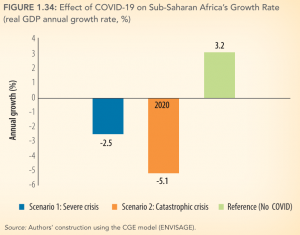
The World Bank’s assessment of the economic impact of COVID-19 in Sub-Saharan Africa gives an idea of this magnitude. Because of international and domestic shocks, Africa’s gross domestic product (GDP) is forecasted to decrease by at least 2.5% in 2020 in the more optimistic scenario of a quick and efficient response. If the COVID-19 epidemic is not rapidly addressed and extends to next year, GDP could decrease by more than 5% in comparison to last year.
While those economic statistics already seem bad, the effects on societies – and particularly on the most deprived and marginalised people – could be devastating. Even before the pandemic, 42% of people in Sub-Saharan Africa lived in extreme poverty (less than $1.90 per day). With household consumption 7% to 10% lower than without coronavirus, the crisis will lead to significant increases in poverty across Sub-Saharan Africa.
We have estimated the effects of those changes in consumption levels on poverty, using data from the World Bank’s PovcalNet dataset (this analysis is similar to that behind the research released by UN-WIDER). Depending on the decrease in consumption, poverty headcount could increase to as much as 47% of the population, levels last seen in Sub-Saharan Africa at the beginning of the last decade, after the global financial crisis. Under the more optimistic scenario, the consequences of COVID-19 would push more than 40 million people in the region into extreme poverty, adding up to a total of 495 million. In the more pessimistic scenario, 514 million people could live in extreme poverty, an increase of 59 million. With more than half of all people in extreme poverty being children, those estimates suggest that between 22 and 33 million children will be pushed into poverty by the economic consequences of COVID-19.
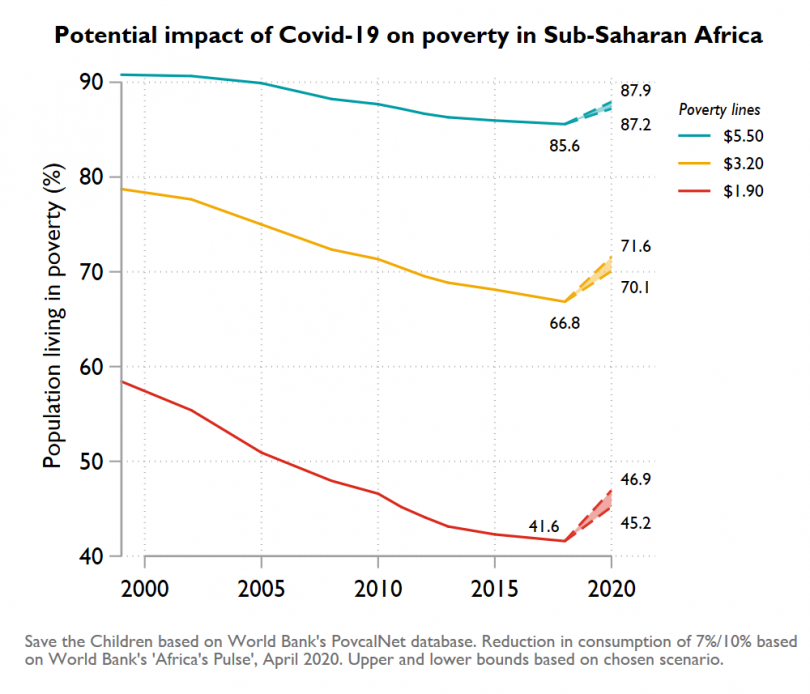
Going beyond the poverty line of $1.90 per day – the cut-off the World Bank sets for extreme poverty – we see a significant impact of the economic consequences of COVID-19 on people in other poverty defined by other income thresholds as well. For poverty measured at $3.20/day, coronavirus might push between 36 and 52 million people into poverty. The proportion of the population living If below an income threshold of $5.50/day could increase up to 88%, potentially increasing poverty by up to 26 million people to 962 million.
Since we have published those estimates first, new evidence on the economic impact of COVID-19 and its poverty impact globally has emerged. The UN suggests that 84-132 million people worldwide could be pushed into extreme poverty, among them 42-66 million children. With more than half of poor children living in Africa, those estimates are very close to ours above. Earlier this week, the World Bank has presented new data that COVID-19 may cause extreme poverty increasing by 40-60 million people globally. While we would like to hope that those much lower estimates are correct, there are some doubts that the underlying IMF growth projections – which are the basis for the analysis the World Bank did – may be too positive in assuming that the pandemic fades in the second half of 2020 and the economic disruptions will only be short-felt.
All of those estimates have important limitations and make some strong assumptions. For instance, do they not take into account the income distribution within countries, but do assume that the drops in consumption are equally felt across income groups. However, we can certainly accept that a lot of the economic consequences on GDP and consumption are felt by those closer to the poverty lines, actually suggesting that poverty rates may be higher than projected above.
More importantly, our analysis is looking solely at monetary poverty, ignoring important dimensions of child poverty. We are starting at the moment a project, which will look more broadly at the consequences of this pandemic on multidimensional child poverty.
There is now a real and present danger that the 2020s will become a ‘lost decade’ of unprecedented reversals in development. The world’s poorest and most vulnerable people will bear the brunt – and the hopes of a generation of children will be destroyed. “Protecting a generation from COVID-19”, our agenda for action lays out what is needed now through coordinated community, national and global action to avert catastrophic outcomes for the poorest and most marginalised children on the planet.
Read more about Save the Children's response to coronavirus.
A version of this blog originally appeared here on the Save the Children UK site.
